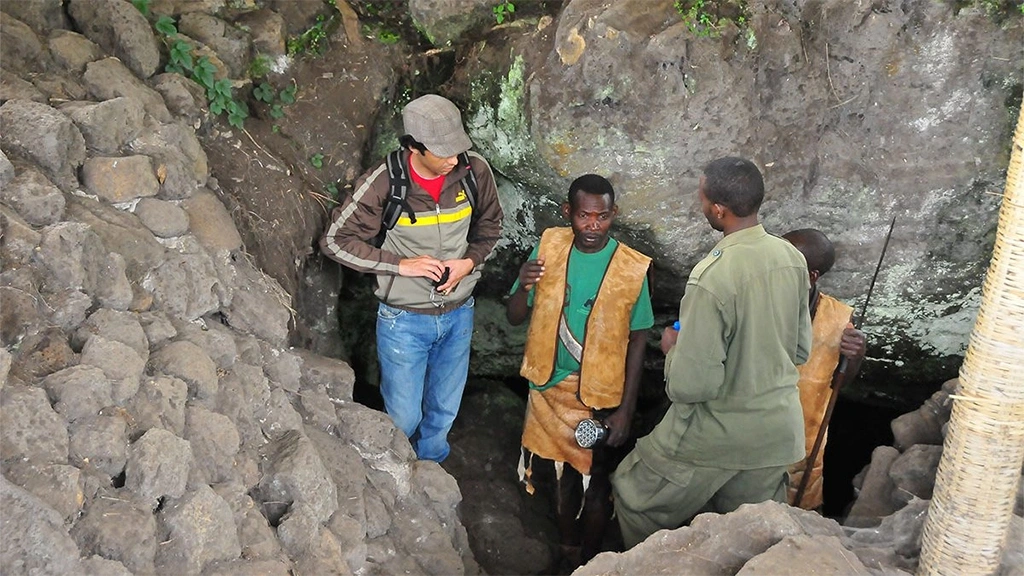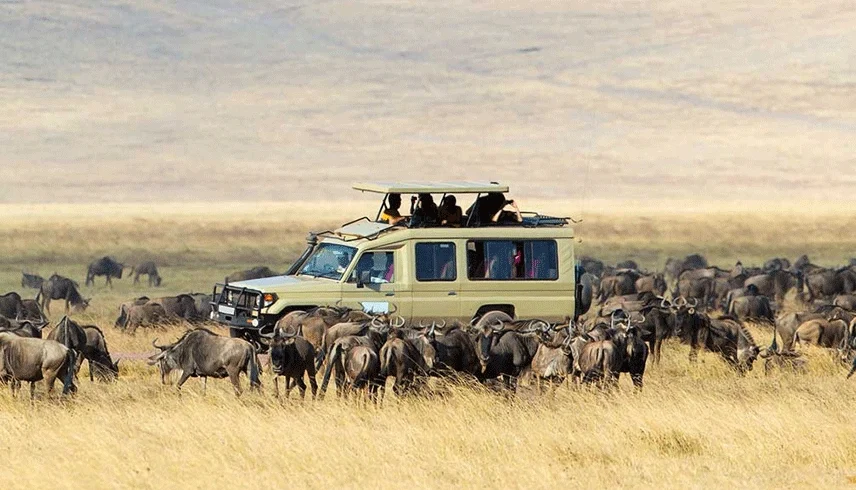Ngarama Cave in Mgahinga Gorilla National Park
Ngarama Cave in Mgahinga, nestled within Uganda’s scenic Mgahinga National Park, is a must-see attraction with a rich history and cultural significance. Located approximately 3 kilometers from the Ntebeko visitor center, this 342-meter-long cave offers a unique journey into the past, as it was once home to the indigenous Batwa people who resided here for generations. Today, Garama Cave stands as a historical and cultural landmark, representing the resilience and legacy of the Batwa community.
The Batwa People and Their Connection to Garama Cave
The Batwa, one of Uganda’s oldest indigenous tribes, have a profound connection to Garama Cave, which served as their shelter and strategic hideout. For centuries, the Batwa lived as hunter-gatherers, relying on the forest for their survival. Garama Cave provided more than just protection from the elements; it was a central hub for their community, where they gathered, held important meetings, and planned raids to defend their land and resources. The Batwa utilized the cave as a council chamber and retreat, highlighting its significance as a site for both governance and safety.
A Strategic Hideout with Historical Significance
The location of Garama Cave, positioned beneath a plateau on the northern edge of Mgahinga National Park, made it an ideal refuge for the Batwa during times of conflict. In earlier times, the cave lay within dense forest, which offered natural camouflage and an added layer of security. The Batwa would retreat to Garama Cave following raids on neighboring communities, using its hidden location to shield themselves from potential retaliations. This legacy of resilience has become an integral part of the Batwa’s cultural narrative, which is still honored and preserved through stories and guided tours today.
The Transition of Garama Cave from Forest to Farmland Zone
Over time, the area around Garama Cave transformed from forested land to what is now known as the former farmland zone, as the forest receded and human settlement expanded. Despite these environmental changes, Garama Cave has maintained its historical and cultural essence. In recent years, the Batwa were resettled outside the park, but their connection to the cave remains deeply rooted. Today, visitors can explore the cave and learn about the Batwa’s traditions, struggles, and their enduring connection to Mgahinga National Park.
Visiting Garama Cave Today
A guided tour of Garama Cave offers a window into the Batwa’s past, providing insight into their unique way of life. As part of the Batwa Trail experience, visitors can walk in the footsteps of the Batwa, exploring the cave and listening to stories from Batwa guides about their ancestors’ survival strategies, beliefs, and customs. Through these tours, the legacy of Garama Cave and the Batwa people’s connection to the land is kept alive, making it a memorable and enriching experience for anyone visiting Mgahinga National Park.
Quick Facts about Garama Cave
Garama Cave, a captivating attraction in Mgahinga National Park, stretches an impressive 342 meters in length and reaches a depth of 14 meters. This cave, steeped in history, was once the residence of the Batwa people, a community renowned for their unique culture and remarkable skills as hunters and gatherers. The cave served as a strategic location for the Batwa warriors, who launched attacks against neighboring communities, particularly the Bantu. Today, however, the cave is a sanctuary for bats, creating an intriguing contrast to its vibrant past.
The cave entrance is conveniently located just 3 kilometers from the park headquarters, making it easily accessible for visitors. The trek to the cave takes about four hours, during which a knowledgeable guide will share fascinating stories about how the Batwa survived in this rugged environment and the tactics they employed during their raids. The journey to Garama Cave not only offers a physical challenge but also an opportunity to immerse oneself in the rich history of the Batwa people.
The Historical Significance of Garama Cave
Several years ago, Garama Cave was a bustling site of activity, home to the crafty Batwa, who were skilled warriors. They used the cave as a strategic base from which to plan and execute their attacks on neighboring tribes. The cave’s location provided them with an advantageous position, allowing them to launch surprise raids and defend their territory. The guides at the cave recount vivid tales of these warriors, painting a picture of their resilient spirit and resourcefulness.
While the Batwa no longer inhabit the cave, their legacy remains, echoing through the stories shared by guides who continue to honor their culture. Today, Garama Cave is a place of reflection and learning, where visitors can appreciate the resilience of the Batwa and their connection to the land they once called home.
Guided Walks to Garama Cave
Visitors to Mgahinga National Park can participate in guided walks that offer a unique insight into the lives of the Batwa. During these walks, guides lead participants through the cave, showcasing how the Batwa lived and thrived in this environment. The guides share stories of the Batwa’s historical significance, illustrating how they utilized the cave not only for shelter but also as a strategic point for their raids.
The cave is now a tranquil place inhabited solely by bats, creating a serene atmosphere for those exploring its depths. The guided walk to the cave also includes a stop at a viewing platform located 800 meters from the park’s entrance. This platform provides breathtaking views of the park and its stunning surroundings, rewarding hikers with a moment of tranquility and reflection amidst the natural beauty.
The Experience at the Viewing Platform
Reaching the viewing platform offers visitors a chance to take a break from the trek and enjoy the panoramic vistas of Mgahinga National Park. The platform is designed to enhance the visitor experience, allowing them to absorb the beauty of the landscape while learning about the flora and fauna that call the park home. Display panels are situated at the hill point, providing additional information about the park’s ecology and the significance of the surrounding area.
This stop is free of charge and does not require a guide, allowing visitors to take their time soaking in the views and appreciating the park’s tranquility. It’s an excellent opportunity to capture stunning photographs, reflect on the stories shared during the walk, and connect with the natural world.
Cultural Performances at Garama Cave
One of the highlights of visiting Garama Cave is the atmospheric performance of Batwa music that takes place at the end of the Batwa Trail. This performance is not only a celebration of Batwa culture but also a way to engage visitors in the rich musical traditions of the community. Through song and dance, the Batwa share their history, traditions, and connection to the land, offering a moving conclusion to the guided tour.
Visitors can expect to be captivated by the rhythms and melodies that have echoed through the mountains for generations. This immersive experience not only enriches understanding of the Batwa culture but also fosters a deeper appreciation for the unique heritage of the people who once thrived in this remarkable landscape.
Inquire Now











